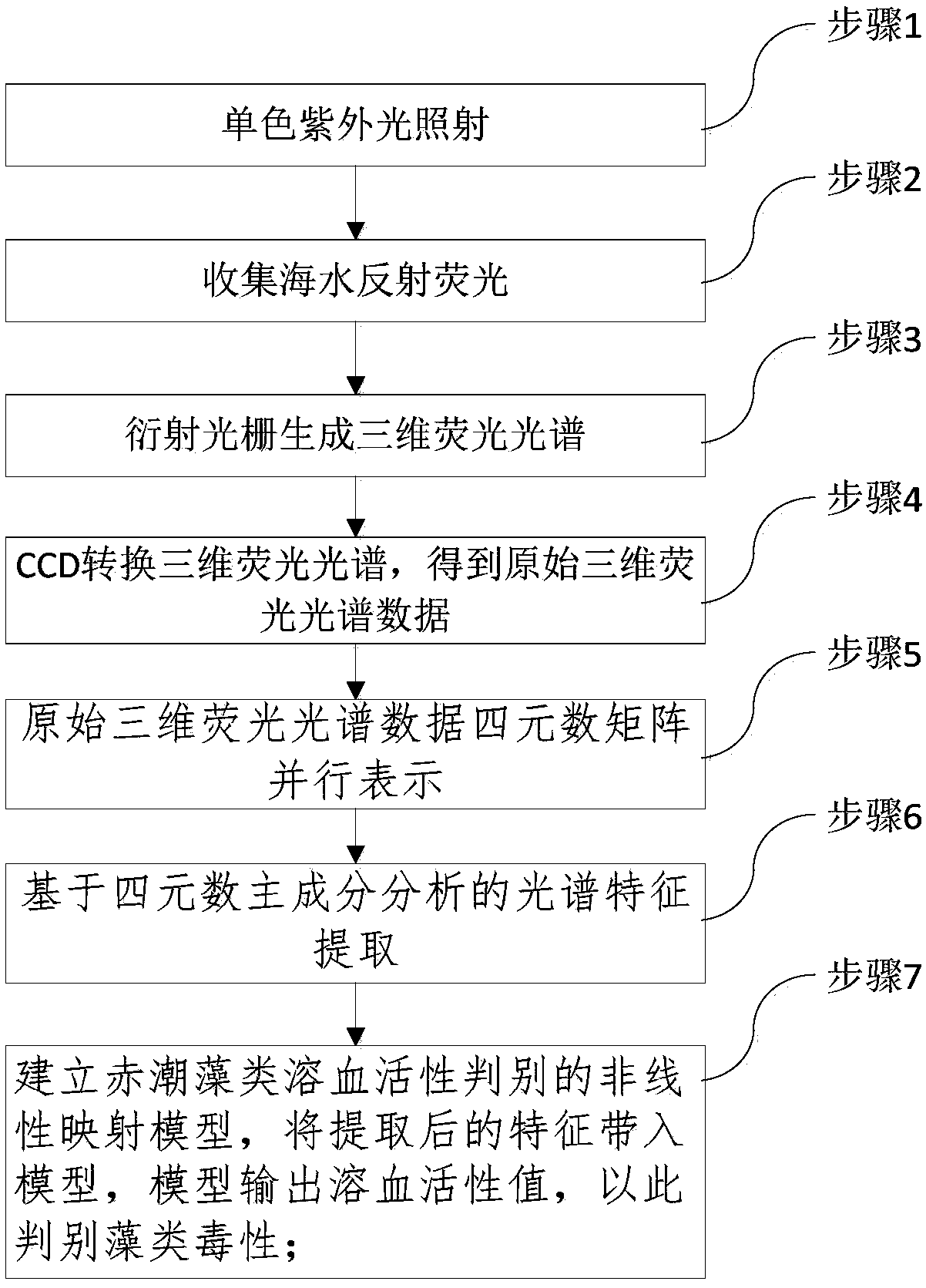Method for detecting red tide and toxicity of seawater algae based on three-dimensional fluorescence spectrum
A three-dimensional fluorescence and toxicity detection technology, applied in the direction of fluorescence/phosphorescence, material excitation analysis, etc., can solve the problems that limit the development and influence of pigment spectroscopy, and achieve the effects of high detection accuracy, high integration, and compact equipment
- Summary
- Abstract
- Description
- Claims
- Application Information
AI Technical Summary
Problems solved by technology
Method used
Image
Examples
Embodiment Construction
[0040] In order to make the purpose, content, and advantages of the present invention clearer, the specific implementation manners of the present invention will be further described in detail below in conjunction with the accompanying drawings and embodiments.
[0041] refer to figure 1 As shown, the detection method of this embodiment comprises the following steps:
[0042] Step 1: Monochromatic ultraviolet light irradiates the seawater to be tested;
[0043] Step 2: Collect seawater reflected fluorescence;
[0044] Step 3: Reflect fluorescence to generate a three-dimensional fluorescence spectrum through a diffraction grating;
[0045] Step 4: The three-dimensional fluorescence spectrum in the form of optical signal is converted into the three-dimensional fluorescence spectrum in the form of electrical signal by CCD, and the original three-dimensional fluorescence spectrum data of seawater is obtained;
[0046] Step 5: Parallel representation of the original three-dimensi...
PUM
| Property | Measurement | Unit |
|---|---|---|
| Wavelength | aaaaa | aaaaa |
Abstract
Description
Claims
Application Information
 Login to View More
Login to View More - R&D
- Intellectual Property
- Life Sciences
- Materials
- Tech Scout
- Unparalleled Data Quality
- Higher Quality Content
- 60% Fewer Hallucinations
Browse by: Latest US Patents, China's latest patents, Technical Efficacy Thesaurus, Application Domain, Technology Topic, Popular Technical Reports.
© 2025 PatSnap. All rights reserved.Legal|Privacy policy|Modern Slavery Act Transparency Statement|Sitemap|About US| Contact US: help@patsnap.com



